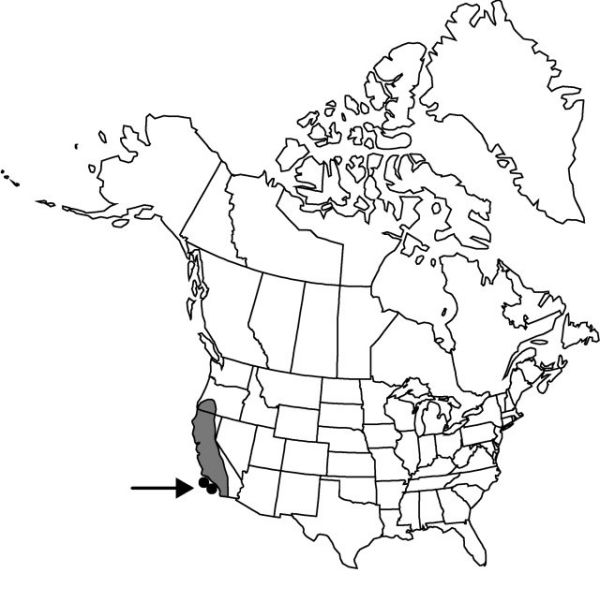familyLiliaceae
genusDichelostemma
speciesDichelostemma capitatum
subspeciesDichelostemma capitatum subsp. capitatum
Dichelostemma capitatum subsp. capitatum
Illustrated
Synonyms: Brodiaea capitata var. insularis (Greene) J. F. Macbride Brodiaea insularis (Greene) Burnham Dichelostemma insulare L. W. Lenz Dichelostemma lacuna-vernalis (Greene) Rydberg Dipterostemon insularis
Inflorescences 6–15-flowered; bracts usually dark purple, sometimes paler and striped dark purple. Flowers: perianth lobes usually ascending; pedicel 1–15 mm, usually shorter than bracts. 2n = 18, 36, 54, 72, 90.
Phenology: Flowering mostly spring (Feb–Apr; as early as Dec in the south, as late as Jun–Jul for high-elevation populations).
Habitat: Most abundant in open woodlands and grasslands, but found in many habitat types
Elevation: 0–2300 m
Distribution

Calif., Oreg., n Mexico (Baja California), n Mexico (including islands)
Discussion
Many populations of subsp. capitatum may merit separate subspecific if not specific status. For example, the plants sometimes recognized separately as Dichelostemma lacuna-vernalis have a distinct morphology and favor vernal pools (L. W. Lenz 1974). However, they are no more distinct in morphology or habitat than are several other populations, and further study is needed (G. Keator 1992).
Selected References
None.
Lower Taxa
None.
"broad" is not a number."thicker" is not a number.
... more about "Dichelostemma capitatum subsp. capitatum"
basifixed +
basifixed +
notched +
sheathing +
herbaceous +
dilated +
keeled +
narrow +
absent +
2;4 +
ovate;lanceolate +
papery +
solid +
fibrous-coated +
fleshy +
adnate +
slender +
single +
capsular +
loculicidal +
firm +
Present +
6-15-flowered +
racemose +
dense +
simple +
persistent +
? (?) +
2 cm20 mm <br />0.02 m <br /> (?) +
wider +
alternating +
sessile +
superior +
ovoid +
several +
articulate +
flexuous +
usually shorter +
erect +
lanceolate +
6-tepaled +
connate +
ascending +
showy +
3-carpellate +
Proc. Acad. Nat. Sci. Philadelphia +
1868 +
curved +
weak +
twining +
smooth to scabrous +
cylindrical +
65 cm650 mm <br />0.65 m <br /> (?) +
wind-distributed +
black +
angled +
Illustrated +
epitepalous +
fertile +
absent +
capitate +
distinct +
3-lobed +
Dichelostemma capitatum subsp. capitatum +
Dichelostemma capitatum +
subspecies +
absent +
greener +
equal +
narrower +
scapose +
perennial +
woody +
